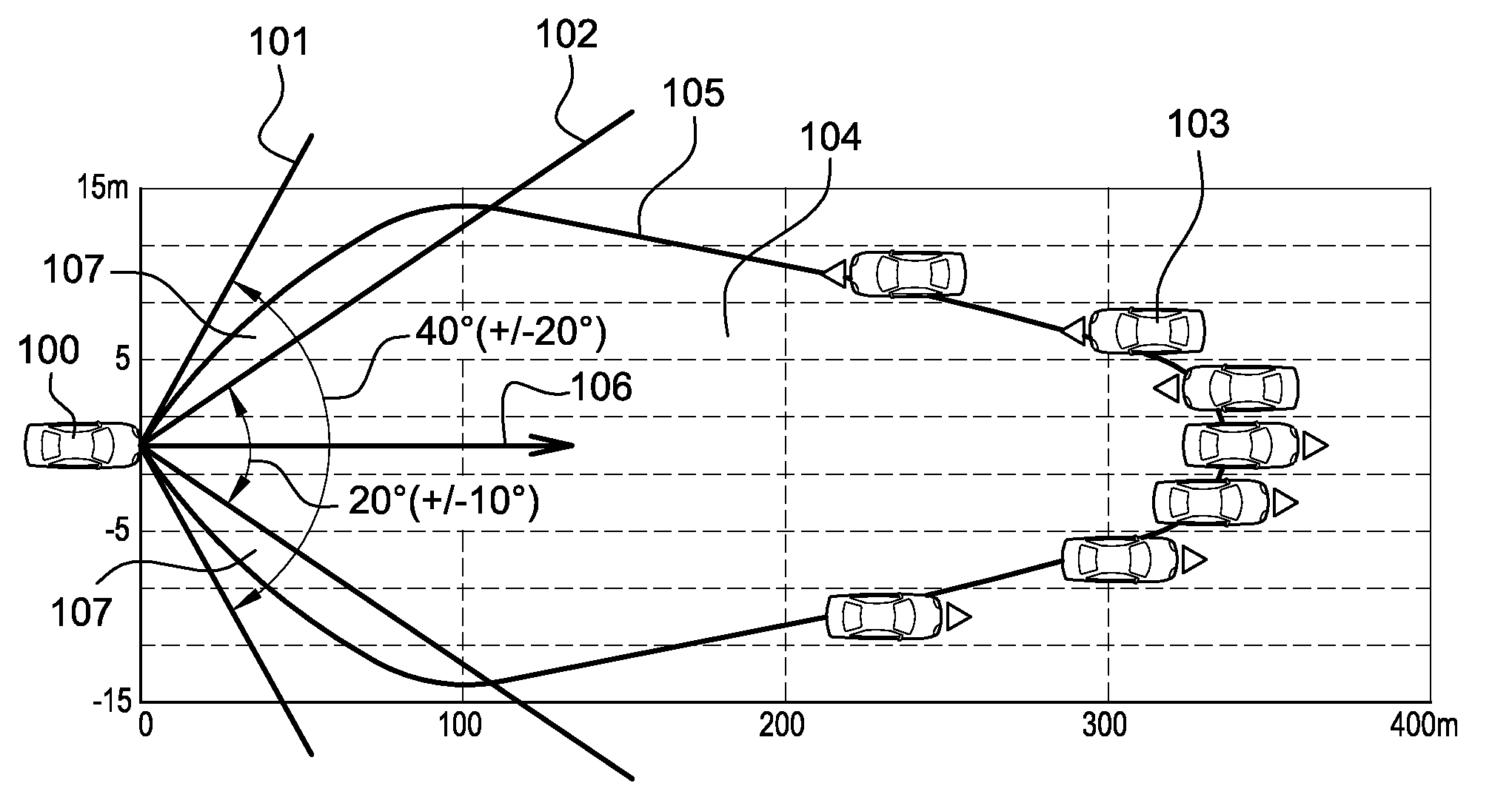Device intended to support the driving of a motor vehicle comprising a system capable of capturing stereoscopic images
a technology of stereoscopic images and support systems, applied in the field of advanced driving support systems, can solve the problems of not offering a wide range of vision, not providing any information on the highway environment, and their angular positioning is never very precise, so as to reduce the amount of space required at the windscreen level, simplify the driving support system, and integrate the different items of equipment.
- Summary
- Abstract
- Description
- Claims
- Application Information
AI Technical Summary
Benefits of technology
Problems solved by technology
Method used
Image
Examples
Embodiment Construction
[0042]FIG. 1 shows a vehicle 100 fitted with a device according to the present invention. This latter comprises at least a first camera of the grey levels camera type, which does not therefore provide color information, and a second camera of the color camera type. In the example shown, the first camera has a first field of vision 101, defined by a viewing angle centered on the direction of travel 106 of the vehicle 100, the size of this angle being in the order of 40 degrees. The second camera has a second field of vision 102, also centered on the direction of travel 106 of the vehicle 100, with a lesser field of vision than the first camera, for example in the order of 20 degrees. Advantageously, the second field of vision 102 contains a complete glare zone 105, representing a zone, in which any other vehicle 103 that is present risks being dazzled if the vehicle 100 uses its main beam headlamps. In this way, the two zones present an overlapping or covering zone 104, for which the...
PUM
 Login to View More
Login to View More Abstract
Description
Claims
Application Information
 Login to View More
Login to View More - R&D
- Intellectual Property
- Life Sciences
- Materials
- Tech Scout
- Unparalleled Data Quality
- Higher Quality Content
- 60% Fewer Hallucinations
Browse by: Latest US Patents, China's latest patents, Technical Efficacy Thesaurus, Application Domain, Technology Topic, Popular Technical Reports.
© 2025 PatSnap. All rights reserved.Legal|Privacy policy|Modern Slavery Act Transparency Statement|Sitemap|About US| Contact US: help@patsnap.com


